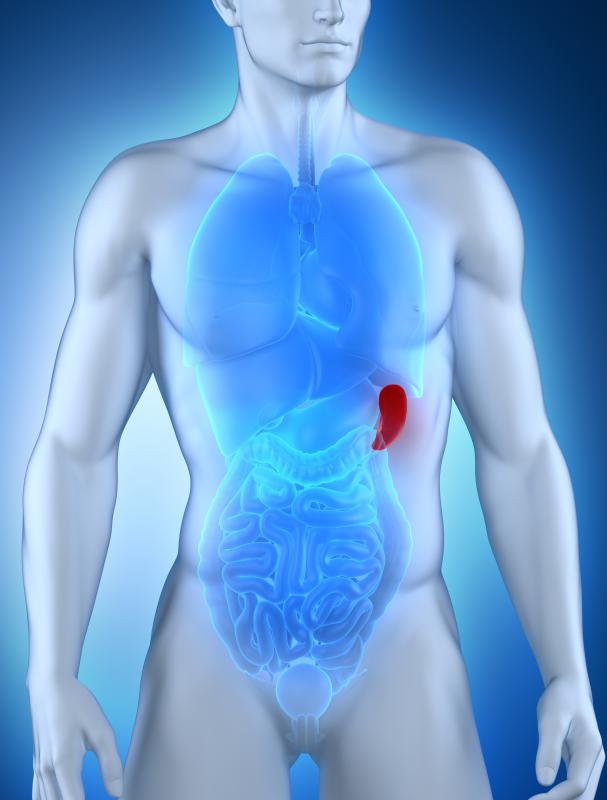At WiseGEEK, we're committed to delivering accurate, trustworthy information. Our expert-authored content is rigorously fact-checked and sourced from credible authorities. Discover how we uphold the highest standards in providing you with reliable knowledge.
What is the Pathophysiology of Trauma?
The pathophysiology of trauma is the study of the changes which occur in the body following a traumatic event or injury. Trauma patients often experience different changes within the biochemical and physical aspects of the body after a traumatic event, and sometimes these changes may last the rest of their lives. Examples of the types of pathophysiology of trauma include abdominal trauma and blunt trauma, or a physical impact to an area of the body. Skeletal trauma is also another common trauma type and can promote anything from minor fractures to permanent growth plate damage in adolescents.
Abdominal trauma is a common injury associated with taking a blow to the stomach and abdominal area, causing a rupture in the abdominal muscle or injury to various abdominal organs. The spleen is often injured in an abdominal trauma, and the injury can range from a slight pain sensation which may subside in a few days to rupturing or hemorrhaging for more serious cases. The kidneys may also be injured in an abdominal trauma, which may become life threatening. The pathophysiology of trauma for these organs may be fatal for the body if not treated properly, as trauma will defer the organ's functions away from their normal bodily processes.

Blunt trauma is seen in any part of the body which can take a strong blow to create an injury. Types of blunt trauma include blows to the head and eyes, as well as to the stomach, chest and back. When a blunt trauma occurs to the eyes, temporary vision changes and bruising may occur, as well as blindness in severe cases. If a blunt instrument was to hit the head, concussion might occur or even permanent brain damage, which is often studied in the pathophysiology of trauma.

An obvious correlation can be seen between the change in function, or the change in physiology, of certain body parts or organs due to a trauma. The pathophysiology of trauma can range from mild and temporary to severe and life threatening. A skeletal trauma, for instance, may include temporary and mild fractures to the bones of the skeleton, which are easily remedied by resting the bone until healed. On the other hand, trauma to the skeletal system of an adolescent, due to strenuous activity or violence, may cause a disturbance in the growth plates, affecting future growth potential.
AS FEATURED ON:
AS FEATURED ON:


















Discuss this Article
Post your comments